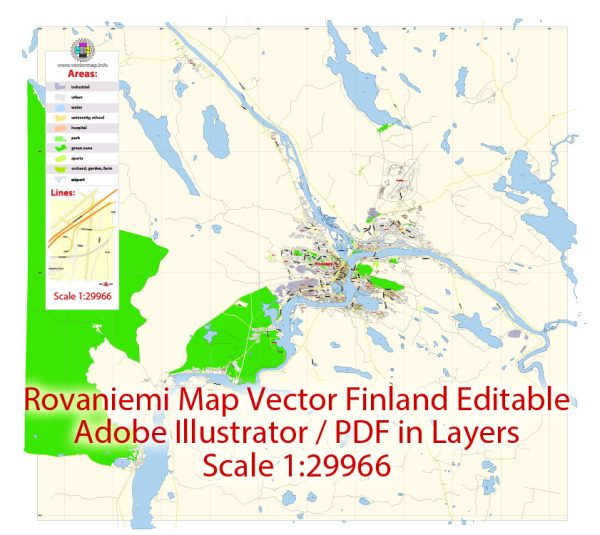Rovaniemi, the capital of Lapland, Finland, has a rich history of urban development that spans several centuries. Here’s a brief overview of key historical periods and milestones in Rovaniemi’s urban development:
- Early Settlement and Indigenous Presence (Pre-16th century):
- The area around Rovaniemi has been inhabited by the indigenous Sámi people for thousands of years. They were primarily engaged in hunting, fishing, and reindeer herding.
- Colonization and Swedish Influence (16th–19th centuries):
- The colonization efforts by the Swedish crown in the 16th century had an impact on the region. The area became part of the Kingdom of Sweden and was influenced by Swedish culture and governance.
- In the 18th century, Rovaniemi began to emerge as a more permanent settlement, with a focus on agriculture and trade.
- Russian Influence and Industrialization (19th century):
- Following the Finnish War (1808–1809), Finland was ceded to Russia. The Grand Duchy of Finland was formed under Russian rule.
- Rovaniemi’s development gained momentum in the 19th century with the growth of trade, forestry, and agriculture. The Kemijoki River played a crucial role in transportation and trade.
- World War II and Reconstruction (20th century):
- During World War II, Rovaniemi suffered significant damage due to German troops retreating and practicing a scorched-earth policy. The town was almost completely destroyed in 1944.
- After the war, reconstruction efforts were initiated, and Rovaniemi was rebuilt. Architect Alvar Aalto was involved in the post-war reconstruction and contributed to the town’s modern planning.
- Post-War Growth and Tourism (Late 20th century):
- In the latter half of the 20th century, Rovaniemi experienced growth in various sectors, including industry, education, and services.
- The town became a center for tourism, especially with its designation as the official hometown of Santa Claus. The Santa Claus Village, located just outside Rovaniemi, became a major attraction.
- Contemporary Developments (21st century):
- Rovaniemi continues to evolve as a modern urban center with a focus on sustainability and cultural heritage. The cityscape features a blend of modern architecture and preserved historical buildings.
- The Arctic Circle, which runs near Rovaniemi, contributes to the town’s unique identity as the gateway to the Arctic region.
Throughout its history, Rovaniemi has faced challenges such as war and destruction, but its resilience and strategic location have allowed it to rebuild and emerge as a vibrant urban center in the northern reaches of Europe. The city’s commitment to preserving its cultural heritage while embracing modern developments has contributed to its appeal as a destination for tourists and residents alike.


 Author: Kirill Shrayber, Ph.D.
Author: Kirill Shrayber, Ph.D.